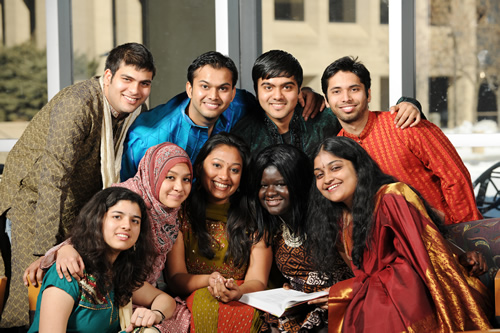
After a near decade of court battles and immigration appeals, the California Supreme Court recently ruled undocumented immigrant students are eligible to pay in-state rates for tuition at public colleges.
To qualify, immigrants must meet the same residency and graduation requirements as other students. However, they are still not entitled to government financial aid, loans, or grants.
Although the win was not as broad as the DREAM Act, it provides a fresh ray of hope for undocumented immigrant scholars hoping to earn college degrees.
When students who have worked hard through high school to earn good grades, Andrea Ramos, director of the Immigration Law Clinic at Southwestern Law School, told the Los Angeles Times, learn they can’t go to college, it’s devastating.
In short, the court’s decision centered on Assembly Bill 540, a law passed in 2001.
Under AB 540, any student who attended a California high school for at least three years and graduated, regardless of immigration status, is allowed to pay in-state tuition costs.
As a DREAM Act supporter, I was glad to see California exerting a leadership role on moving the issue of supporting future scholars in their educational quest.
As usual with immigration issues, the court ruling sparked a wave of public debate.
The Federation for American Immigration Reform (FAIR), an organization known for its oppostion to comprehensive immigration reform, was among the first to respond.
“The real losers in today’s ruling are the taxpayers of California,” said Dan Stein, president of FAIR, “and thousands of U.S. citizens pursuing their educational goals in California who want nothing more than the same deal illegal aliens get.”
According to FAIR, the costs of education, health care, and incarceration of illegal aliens in California costs $10.5 billion per year. In terms of education, FAIR asserts undocumented immigrant children constitute 15% of the student body and estjmates California spends $7.7 billion to educate these children.
Unfortunately, such dissent goes far beyond the scope of the court’s decision. Even worse, it is based on a truncated economic and public policy analysis.
Economic Contributions By Immigrants
When immigration opponents stress the tax costs related to undocumented immigrants, they usually neglect to mention immigrants’ economic contributions.
A few examples from my day-to-day practice as a San Diego immigration attorney illustrate this oversight.
Take, for instance, deportation trials for undocumented immigrants. At these hearings, if immigrants have ever worked in the U.S., judges require them to prove they paid income taxes. The same is true at green card interviews.
Yet, in most cases, due to the lack of valid documents, immigrants do not claim their income tax refunds.
Moreover, immigrant buying patterns are not much different than the American public’s behavior. They buy food, clothes, and cars. They go to movies, restaurants, and sporting events. All the while, they’re paying sales taxes at the same rate as U.S. citizens, even though their hourly earnings are generally far lower.
The U.S. Census Bureau estimates immigrants in California pay $30 billion in federal taxes, $5.2 billion in state income taxes, and $4.6 billion in sales taxes each year. Many immigrants also pay property and payroll taxes, not included in the Census Bureau’s report.
On the average, immigrant households in California contribute $2,679 annually to Social Security, which is $539 more than the average U.S. citizen household.
In other words, immigrants, documented and undocumented, do not just take money out of public coffers. They also make sizable contributions.
California’s Changing Social Reality
The thinking behind AB 540 reflects the state’s changing demographics.
At present, immigrants represent more than 25% of the California population and over 1/3 of the state’s workforce.
The unspoken reality is that most immigrants, prior to earning lawful status, go through a long waiting period.
Fixing visa backlogs and green card delays is necessary. As explained in Renewing The Battle For The Reuniting Families Act, immigrants often have to wait several years before their green card applications are processed and permanent resident interviews granted.
In a strange twist of law, while their applications remain pending, many are unable to leave the country. By leaving, they risk being barred from returning to the United States for up to 10 years, even if they meet all other qualifications for permanent residency.
So they remain here stuck in an undocumented status.
Despite these obstacles, 44.8% of immigrants living in California have already become naturalized citizens. And 9 out of 10 children in immigrant families are U.S. citizens.
This means many immigrants, classified as undocumented today, will become lawful residents next year and citizens within the next five to ten years.
This social reality is not part of the calculations of immigration opponents.
Instead, using shrill rhetoric, opponents portray undocumented immigrants as living here illegally for decades, not paying any taxes or contributing any economic benefits to society.
Both perceptions are wrong.
Positive Benefits To California And California Colleges
The court’s decision also took into consideration educational dynamics in California.
In a newly released study, the California Department of Education notes Latinos now make up the majority of California public school students, cracking the 50% barrier for the first time in state history.
The data does not show what percentage of students in K-12 were undoucmented immigrant youth, a factor which casts doubt on how groups like FAIR derives its estimates.
Common sense also undermines opponents’ arguments.
As Abel Maldonado, California Lieutenant Governor, has said, since taxpayers invest almost $100,000 in a student’s early education, it’s a plus to the state if they go to college. If students earn a degree, they will be more productive, earn better wages, and pay higher taxes. This ensures they repay the governement and taxpeyers’ investment.
According to DREAM Act proponents, less that 2% of all high school graduates are undocumented immigrants.
This closely coincides with figures provided by California colleges showing less than 1% of its enrollment qualify for the lower in-state tuition fees. Of these, most are U.S. citizens and lawful permanent residents.
These numbers show why opponents’ claims that immigrant children are allowed to pay lower tuition than their U.S. counterparts is flawed. No child with the requisite California ties is left behind. AB 540 offers no favoritism for immigrants.
In actuality, many U.S. citizens and lawful permanent residents who attended and graduated from high school in California now live elsewhere. The court’s ruling provides them with a financial incentive to return California to complete their higher education.
Again, this is a plus for California. By offering in-state tuition, more out-of-students will attend California schools. This means more revenues for the state treasury.
In my view, AB 540 is a win-win policy, not only for undocumented immigrant students, but for all of California.
By Carlos Batara, Immigration Law, Policy, And Politics




